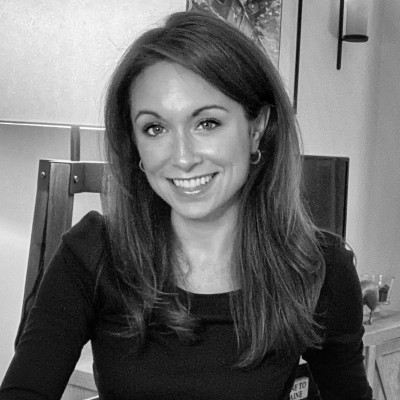ForceBrands’ Impactful Search® hosted a live webinar in May 2023 with industry leaders in a timely conversation about trends impacting the modern CFO and finance team.
KEY TAKEAWAYS:
• Explore more about the CFO evolution and what skills and competencies are required of today’s financial leaders. Download our Force Multiplier Report on the rise of CFO and executive finance roles.
• Today’s CFOs should consider every form of funding out there. There are always other better alternatives for businesses in the short-term.
• When it comes to financial stability and social impact, it shouldn’t be a trade-off. “If people come into it thinking it’s going to be a trade-off, it’s going to be a trade-off. It’s that simple,” shares Rajesh Babu.
Executive leadership expectations have never been more intense. And the modern Chief Financial Officer (CFO) is integral to advancing the CEO’s vision and company mission. The demand for agile and innovative Finance talent is remarkably high.
In a live webinar, ForceBrands’ Impactful Search® brought together industry leaders to weigh in on profitability vs. growth, changes in the banking industry, advice for aspiring CFOs, and more.
Moderated by Sean Conner, Co-Founder & Chief Progress Officer at ForceBrands and Impactful Search®, panelists included Elizabeth Carter, President and COO at Chomps; Rajesh Babu, Partner at BFG Partners; and Taylor Burroughs, CFO at NotCo.
Read on for some of the highlights from the panel discussion below (edited for clarity) and watch the full video here:
The trade-offs between profitability and growth
Elizabeth Carter: Companies have to really understand how to tighten and make sure that when they talk about growth, they understand that comes with profit. When I talk about with our company we’re kind of creating our strategic vision, first and foremost, you have to map out your key performance indicators (KPIs). Your whole team should understand your goal for the year — whether it’s top line or bottom line. That’s the foundation to really set the stage for your team so they understand what you’re driving toward in the year. You can’t expect to grow 100 percent on your top line and expect to grow the same on the bottom line at the same time. It takes profits to grow. In the past several years, inflation has impacted every business. It doesn’t matter if you’re a service industry or you’re a product. I think the only thing that I’ve seen, particularly this year, that has softened a little bit is freight and some plastic cardboard, but beyond that, companies are still struggling with that. And on the flip side, retailers are pushing back more.
It’s no time like the present to really truly understand what growth you’re looking for — for your company and profits. At the same time, when you’re talking about growing the top line, you have to fully understand what that means from contribution margin associated with a retailer. You have to understand what it’s going to take to say ‘yes’ to that retailer and understand that some of those times it’s going to say ‘no.’ A lot of companies in the past have thought, ‘Oh, we can just say yes and we’ll make up the profits later.’ And that’s just not the case anymore. It takes much longer to make up those profits. And so making sure that you’re fully aware as a team what your goals are from top and bottom line, and then also, what are those guardrails around when you could say yes to a retailer and when you’re going to have to say no to make sure you fit within those guardrails and those KPIs.
Taylor Burroughs: One responsibility of the CFO and the rest of the leadership team is to also really think about the incentives and the redesign of incentives in an organization because a lot of the times incentives haven’t kind of caught up to the new reality. We’re still incentivizing people and measuring things more aligned with the past 10 years than the current operating environment. It’s critical to think about getting the right blend of incentives. It’s about growth and profitability — it’s not one or the other. And so where do you set the spectrum of growth and profitability and how do you want to set those incentives and reward people and kind of align the organization around those two concepts?
The other thing I would add is that it’s so important for the CFO and finance community to be the standard bearer of being choiceful and kind of embracing this concept of scarcity, because there were many different things that could be pursued in an environment where it was easy to raise capital, and also that capital was very low. And now it’s about being deliberate and really prioritizing and thinking about resource allocation in a more thoughtful way. And so in every interaction, in every concept across the organization, consistently feeling that culture, and being the standard bearer consistently, is going to be very important, especially in times of change where the pendulum has swung back so far so fast.
Has DTC/e-comm remained an important channel for profitability?
Rajesh Babu: Almost everyone knows that right before Covid e-commerce was a little bit more of — I wouldn’t say an afterthought because for some businesses, it’s very much a big part of their strategy — but post-Covid, everyone really wanted to blow out their e-commerce channel almost at the expense of their brick-and-mortar side. And then like everything else, talking about profitability and swinging back and forth… now you’re kind of swinging in the middle of trying to find a balance between the two. I think it assumes that e-commerce comes at the expense of profitability, which by and large you see it — from the P&Ls I’ve seen, they just haven’t been as strong from the e-commerce perspective versus brick and mortar. Huge generalization, right? There are always examples to the contrary.
I think now people are — as we talked about swinging back and forth — trying to find that happy medium between the two. E-commerce has a lot of intangible benefits. From the marketing side of it, there are things you necessarily can’t quantify something. I think it’s still important as a part of a business as a whole, just from a channel strategy perspective. But you see a lot of folks try to do a little bit of both and that’s tough. If it’s an e-commerce business to start and now you’re going into brick and mortar, then you start cannibalizing your business. If you’re brick-and-mortar, then it’s tough to make your economics and pricing work.
I think for CFOs and people who are thinking about this question today, I’d say it’s really important to have a good pricing strategy to really understand your P&Ls — that goes without a doubt of your e-comm, your brick and mortar, and everything else, and to have it down. Understand the trade-offs. And then understand what balance and mix you can really support and have as a part of your business. Because you don’t want to swing too far in one direction or the other because that will turn it upside down.
A long-winded way of saying there’s absolutely room for both. It’s just going to be somewhere in the middle for a lot of businesses to have a little bit of a presence in both channels.
Banking advice for growth stage brands
Taylor Burroughs: For early stage, growth companies, it’s gone from a topic that can be safely ignored by a lot of boards to a topic now where I’m getting questions I never thought that I would get — specific questions about who was the counterparty for certain investments that we’re making. It’s just topical for very obvious reasons. In thinking about the company’s approach and strategy when it comes to banking and to treasury, I would say a few things.
It’s now more important than ever to think about stress-testing scenarios. So, who are we working with? How are we protected against various risks and how do we mitigate those risks, create redundancy, and give the business continuity in scenarios where I don’t have access to a particular banking partner? It’s really about setting up risk mitigation strategies. I’d say that’s more on the defensive side.
I would also say, given the rate environment that we’re in now, there’s a very high opportunity cost to not be as thoughtful as possible when it comes to investing strategic cash. I think if you were lazier about that choice in the past, there was a negligible difference in what your cash could do for you from a yield perspective. And now it’s much different.
I was offered a five-and-a-half percent certificate deposit from a large banking institution. These are meaningful rates to put your cash to work, to be very thoughtful about how you’re going to invest and to align with your fellow leaders, your CEO, the boards about what your objectives are.
My advice would be to sit down and think about what you’re trying to accomplish and consider the guardrails that you’re going to put in place and the governance around that for yourself. Align that with the key leadership and then act on it. Because there’s an opportunity cost to not be as thoughtful about that as soon as you can.
How should today’s brands prioritize funding?
Rajesh Babu: It depends. As you think through all the different forms of funding, and 12-18 months is a pretty common timeframe that people are thinking through, but the reality is, it’s unclear. So just fundamentally with a business, you’re trying to provide liquidity for the next 12-18 months while also working with them to create a structurally sound path to profitability for the business. That’s the only way you really get out of it is not needing money. Because as you go back to the different forms of funding, I think people always default to who they know and what they know, and what they know well during times of crisis or times of uncertainty. Going back to people who know you is much easier, and a lot of people who’ve invested in the brand don’t want to see it fail. They want to make sure that there’s liquidity to really play out that thesis and have enough time for that brand to survive.
I would encourage every CFO to look at every form of funding out there. Obviously, I’m always a default equity as an investor, but it’s not necessarily always sound for a business. There are other better alternatives for them in the short-term.
It’s important to look at every different source that’s out there and consider everything in this environment until things start swinging back the other way where cash is a bit more free.
Advice for aspiring CFOs
Elizabeth Carter: The most important thing for me is that you understand the whole business — that you don’t have tunnel vision on only what the finance department is doing. You have to understand what the marketing and sales teams are doing because it’s all storytelling. You need to understand why they’re doing it, the ROI, and the purpose of the spend. Is it to grow top line? Is it to grow awareness?
I think one of the hardest things about being in a CFO seat is that you’re always going to be a support. You have to really understand that and then make sure that you’re educating individuals in the different departments on why you’re asking for what you are, or why you’re doing what you’re doing, and then receive the same feedback.
I’ve always been a firm advocate of making sure that each of my departments runs its own budget. They understand favorability and unfavorability, and where it’s coming from. They’re the ones who put the budget out there. They need to be able to maintain it. Giving them the visibility to do it and make themselves and their team more educated.
In addition to that, make sure that you’re holding meetings with the teams to see what other support you can provide them. Are there people they need? Are there different processes? Is it systems? As a support function, you have to be able to support the whole organization and not just the finance department. Throughout my career, as I’ve grown, I’ve been able to see the bigger picture — the different challenges businesses go through at different times.
I think what’s changed from before to now, is individuals want to be more involved in what’s happening in the company. So making sure that top down, bottom up, everybody understands company KPIs and what we’re marching toward. Team members want more visibility and want to know what’s happening in the organization. And so it’s making sure that you’re bringing them along that journey and helping them understand the ‘why.’
How companies are balancing trade-offs between financial stability and social impact
Rajesh Babu: I think that the folks who are doing it because they believe it’s intrinsically important are seeing the best returns on it. It’s still extremely important. If you think about skating to where the puck is going right now, this is the future and so having the wherewithal to think about it now and start putting things in place today is just going to be important. Even if it’s not efficient, it will eventually be.
If people come into it thinking it’s going to be a trade-off, it’s going to be a trade-off. It’s that simple.
Taylor Burroughs: This isn’t going anywhere. And for companies that are on the journey to being a public company one day, going through an IPO, etc., this is going to be a greater and greater mindshare of the finance community around reporting KPIs, audit trails, everything from an accounting perspective to investor relations and messaging. So I think it’s very important to be authentic about it and to really connects to your ‘why.’
There are so many developments happening from a reporting perspective. So just stay very close to what’s happening in the market right now. There are a lot of inefficiencies because we’re lacking some clarity on a few important areas, but over time that will sort itself out and we’ll have rules, we’ll have playbooks, and we’ll manage through it. But staying very close to market developments on this topic would be my best advice.
Balancing accountability with support
Taylor Burroughs: My perspective on accountability and support is part of being accountable, and managing with an accountability mindset is knowing where your gaps are, and what you’re going to do to address those gaps.
I think it would be irresponsible, as a leader of a function in an organization, if you knew that you’re not particularly strong on treasury, or FPNA, or investor relations, and you didn’t do anything to address that — to bring in the right team and the right skill sets to complement you.
And that doesn’t give you a free pass to say, ‘Okay, now I’ve outsourced this aspect of the function and I don’t need to think about it anymore.’ Quite the opposite. I think you have the responsibility to partner with those individuals, to learn from them, and to close those own gaps from a leadership perspective. We should all be on this constant self-improvement journey where we’re saying, ‘What can I be better at?’ and doing the work to close those gaps. So I think that they coexist, and having support doesn’t relieve you of that ultimate, singular accountability.
Closing thoughts
Elizabeth Carter: My final thought — and we talked about this earlier — is just making sure you have a clear understanding with your senior leadership team of what your goals and focus are. Focus is more important than ever with rising costs, making sure that you’re not going far and wide and you’re staying more narrow. And then making sure that that’s cascaded down to the whole organization so everybody is aware of what the goals are, and what you’re trying to get to.
Rajesh Babu: We talked a lot today about mastery of the entire organization and having a broader perspective rather than just the numbers.
What I’ve seen of great CFOs is being able to talk to the team in a way that’s understandable. It sounds so simple, but it’s so important that they understand why the financial side of the business is important. And being able to be true partners with folks and also have some optimism. It’s always good to have a broader perspective or knowledge of the business and be able to have that optimism to get people behind them.
Taylor Burroughs: I have a high disdain for thinking of finance as a support function. And I think that as finance leaders, we are so privileged in the fact that we have access to so much information across the business and we can connect dots that are very difficult for other people to connect. Living up to that privilege and having access to that type of information and to be able to connect those dots and really just be extremely proactive in thinking about, ‘What can I do that can add value to the CEO, to the board, to the organization,’ and there is no shortage of opportunities in this market. So I would say proactivity and energy and pursuing those would be my final comment.
Explore more about the CFO evolution and what skills and competencies are required of today’s financial leaders. Download our Force Multiplier Report on the rise of CFO and executive finance roles.
ForceBrands offers end-to-end hiring solutions for all stages of growth. Whether you’re just starting to hire or are looking for the next step in your career, we’re here to help you be a positive Force that makes an impact.






